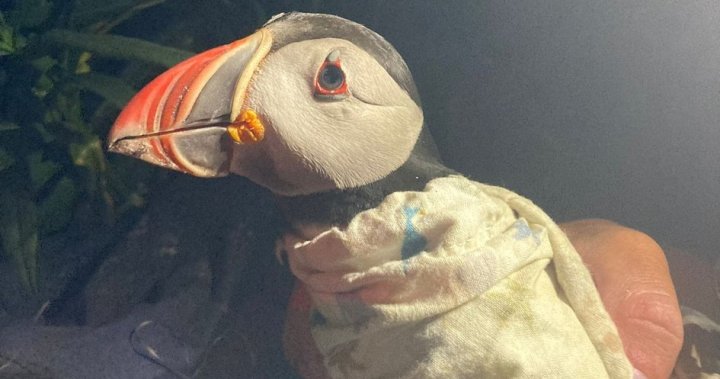I spent two days last week on Machias Seal Island, where the remarkable discovery of a 33-year-old Atlantic puffin is challenging what researchers thought possible for these iconic seabirds. The small, windswept island sits in disputed territory between Canada and the United States, about 19 kilometers from Grand Manan Island, and hosts one of the most significant puffin colonies in the Bay of Fundy.
“I couldn’t believe what I was seeing when I checked the band number,” Dr. Tony Diamond told me as we huddled in a wooden blind, watching hundreds of puffins come and go with beaks full of small fish. Diamond, a wildlife ecologist and research professor emeritus at the University of New Brunswick, has studied these birds for decades through the Atlantic Laboratory for Avian Research.
The elderly puffin, first banded as an adult in 1991, was spotted caring for a chick – proving that these seabirds can remain reproductively active far longer than previously documented. Scientists typically estimated puffin lifespans between 20-25 years in the wild.
“This individual was at least three years old when banded, which means it’s at least 36 years old now,” Diamond explained. “That’s extraordinary longevity for a seabird of this size, and it’s still breeding successfully.”
The discovery comes amid concerning trends for Atlantic puffin populations. Although the birds are not currently endangered in Canada, climate change and shifting ocean temperatures have affected their food sources, particularly herring and sand lance, the small fish that make up the bulk of their diet.
I watched as the ancient puffin waddled across the rocky terrain, its distinctive orange-and-black beak still vibrant despite its advanced age. Unlike many aging creatures, puffins don’t show obvious external signs of senescence – they don’t go grey or develop wrinkles.
“That’s part of what makes this discovery so significant,” said Dr. Lauren Scopel, a research associate at UNB who has worked on the project for years. “Without the banding program, we would have no way to know the true age structure of this population.”
The banding program involves placing small, numbered metal rings around the birds’ legs, allowing researchers to track individuals over time. It’s painstaking work, requiring researchers to carefully extract puffins from their burrows or capture them with specialized nets.
On Machias Seal Island, about 5,000 pairs of puffins nest each summer. The colony has been relatively stable over recent decades, though researchers note subtle changes in breeding success and feeding behavior that may signal ecosystem shifts in the Gulf of Maine.
Local tour operator Durlan Ingersoll, who has been bringing visitors to view the puffins for over 30 years, told me he’s noticed changes in the timing of the birds’ arrival and departure. “They used to be more predictable. Now, with the changing ocean conditions, everything seems a bit off-kilter.”
When I spoke with Sarah Gutowsky, director of the Atlantic Laboratory for Avian Research at UNB, she emphasized the value of long-term monitoring. “Without consistent research efforts spanning decades, we’d miss these insights entirely. This 33-year-old puffin completely reframes our understanding of seabird longevity.”
The discovery also raises questions about what factors might contribute to such exceptional longevity. Puffins face numerous threats, from predation by gulls to increasingly severe storms and changing prey availability.
“We’re still trying to understand what makes some individuals more resilient than others,” Diamond said. “Is it genetics? Behavior? Or perhaps just luck?”
What makes this discovery particularly meaningful is that the bird isn’t just surviving – it’s actively contributing to the next generation. During my visit, I observed the elderly puffin delivering multiple loads of small fish to its burrow, where its chick waited.
Diamond’s team will continue monitoring this remarkable individual and the broader colony. Their work is funded through Environment and Climate Change Canada and various research grants that support this important ecological monitoring.
For visitors to New Brunswick, the puffin colony represents one of the province’s most unique wildlife experiences. Tour boats operate from Grand Manan Island and Cutler, Maine, bringing wildlife enthusiasts to view the charismatic birds during the summer months.
As climate change intensifies, these long-term studies become increasingly valuable for understanding how wildlife adapts – or fails to adapt – to shifting environmental conditions. The unexpected discovery of a breeding 33-year-old puffin offers a glimmer of hope that these beloved seabirds may be more resilient than previously thought.
When I left the island as the afternoon fog rolled in, the ancient puffin was still busily hunting, diving beneath the waves in search of food for its chick. In the face of an uncertain future for seabirds worldwide, this one determined individual continues defying the odds, one fish at a time.






